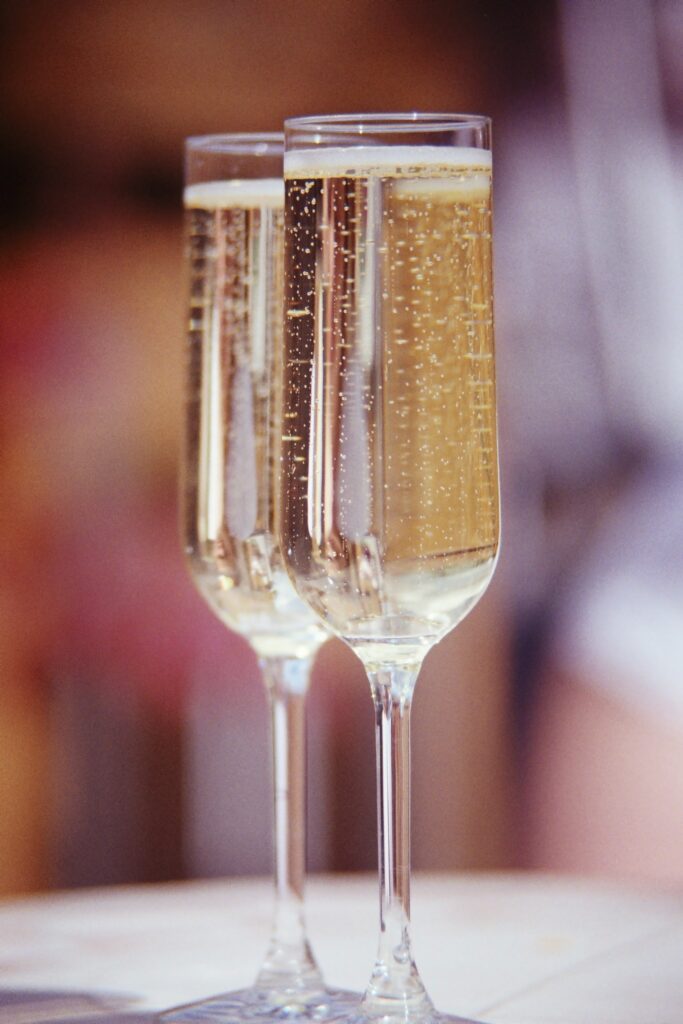Nothing exudes luxury quite like pairing caviar and wine. I can’t help but picture the iconic scene where Diahann Carroll, as Dominique Deveraux, effortlessly threw shade at Alexis Colby while expressing her discerning taste for Petrossian Beluga and her reaction to the spoiled Champagne after the first sip.
If you’re not a caviar and wine connoisseur like Mrs. Deveraux, don’t worry. In this blog post, we’ll guide you through the world of caviar, its different types, and the best wines to enjoy with this fancy treat.
Understanding Caviar
Caviar is a type of roe (fish eggs) that comes traditionally from sturgeon, a prehistoric fish found in various parts of the world. It is highly prized for its unique texture, flavor, and luxurious reputation.
The caviar harvest involves delicately extracting the eggs from the sturgeon. The harvested eggs are carefully separated from the sturgeon’s ovaries and are then lightly salted. This curing process serves multiple purposes: it enhances the flavor, acts as a preservative, and imparts the characteristic briny taste that caviar is known for. The result is tiny, glistening orbs that range in color from deep black to pale gold.

Caviar Varieties
- Beluga Caviar: Known for its large, luscious grains and a rich, buttery flavor, Beluga caviar is considered the most prestigious of all. It is sourced from the beluga sturgeon and is a true indulgence for caviar enthusiasts.
- Osetra Caviar: Osetra caviar, obtained from the osetra sturgeon, boasts a nutty, earthy flavor and a medium-sized grain. It is celebrated for its distinct taste and slightly firmer texture.
- Sevruga Caviar: Sevruga caviar, gathered from the sevruga sturgeon, offers a pronounced briny taste and smaller eggs compared to Beluga and Osetra. Its unique saltiness makes it a favorite among some connoisseurs.
- Siberian Caviar: This caviar variety, derived from the Siberian sturgeon, offers a milder, creamier flavor profile. Its smaller grains are ideal for those seeking a subtler caviar experience.
- American Sturgeon Caviar: Produced from sturgeon native to North America, American sturgeon caviar provides a delightful alternative. It showcases a range of flavors, often influenced by the sturgeon’s habitat and diet.

Pairing Caviar and Wine
Pairing caviar and wine is an art that enhances the experience of both the food and the drink. The goal is to find a wine that complements and elevates the flavors and textures of the caviar. Here are some excellent wine options to consider:
- Champagne: The classic choice for caviar, Champagne’s effervescence and acidity cut through the richness of caviar, creating a harmonious balance. Opt for a Brut or Extra Brut Champagne for the best pairing.
- Chardonnay: A crisp, unoaked Chardonnay works well with caviar, as its clean and bright acidity enhances the caviar’s flavors without overwhelming them.
- Sauvignon Blanc: A Sauvignon Blanc with its vibrant acidity and herbaceous notes can be an excellent match, particularly with lighter caviar varieties like Siberian or Sevruga.
- Pinot Noir: For those who prefer red wine, a delicate, low-tannin Pinot Noir can pair nicely with caviar, especially when served with blinis or crème fraîche.
- Vodka: While not a wine, vodka is a traditional choice for caviar pairing. Its neutral flavor and high alcohol content cleanse the palate, allowing the caviar’s nuances to shine.

Serving Caviar and Wine with Elegance
Serving caviar is an art in itself, as the presentation can enhance the overall dining experience. Here’s a step-by-step guide on how to serve caviar with the elegance it deserves:
Select the Right Equipment:
- Start with chilled serving ware. A mother-of-pearl, bone, or glass dish is preferred as they won’t impart any metallic flavors to the delicate caviar.
- You can also use a non-reactive spoon, such as one made from mother-of-pearl or horn, for scooping the caviar.
Keep It Cold:
- Caviar is best enjoyed when it’s kept cold. Store it in the coldest part of your refrigerator (around 32-34°F or 0-1°C).
- Just before serving, place the caviar tin or jar in a bowl of crushed ice to maintain its temperature.
Presentation:
- When it’s time to serve, remove the caviar from the refrigerator and let it sit for a few minutes to slightly warm up. This helps release its aromas.
- Open the tin or jar carefully, being mindful not to damage the delicate grains.
- Arrange your serving dish on a larger platter or tray lined with ice to keep the caviar cool throughout your meal.
Accompaniments:
- Classic accompaniments for caviar include blinis (small, fluffy pancakes), toasted brioche, thinly sliced bread, or potato chips (my favorite).
- Offer traditional condiments like chopped red onion, chopped egg whites and yolks (separated), crème fraîche, and lemon wedges.
Serving Size:
- Caviar is incredibly flavorful, so a little goes a long way. Aim for about 1 to 1.5 ounces (28-42 grams) per person, which is roughly one to two tablespoons.
- Serve it in a mound on the chilled dish, preferably in the center.
Caviar Eating Etiquette:
- Encourage your guests to use a non-metallic spoon or the back of their hand to taste the caviar. The spoon shouldn’t be made of metal, as it can affect the taste.
- To savor the flavors fully, place a small amount of caviar on the blini or bread and add a dollop of crème fraîche, a sprinkle of chopped onions, and perhaps a bit of chopped egg yolk. Squeeze a dash of lemon juice on top.
- Enjoy the caviar in small bites, allowing the textures and flavors to unfold on your palate.
Caviar and Wine Pairing:
- Serve your chosen wine, whether it’s Champagne, Chardonnay, or another selection, in chilled glasses alongside the caviar.
By following these steps and paying attention to detail, you can serve caviar with the grace and style it deserves, creating an unforgettable dining experience for yourself and your guests.
Conclusion
Caviar, with its elegance and mystique, remains a symbol of luxury dining. Understanding its various varieties and choosing the right wine to accompany it can elevate your culinary experience to new heights. Whether you opt for the classic Champagne pairing or venture into other wine options, the key is to savor each bite of caviar and sip of wine, allowing the flavors to dance on your palate, creating an unforgettable gastronomic experience. So, the next time you indulge in caviar, remember to raise a glass to the finer things in life. Cheers!
The post is all about pairing caviar and wine!
Other Posts You’ll Love
11 Black-Owned Sparkling Wines
How to Saber a Champagne Bottle: The Art, Science, and Safety
